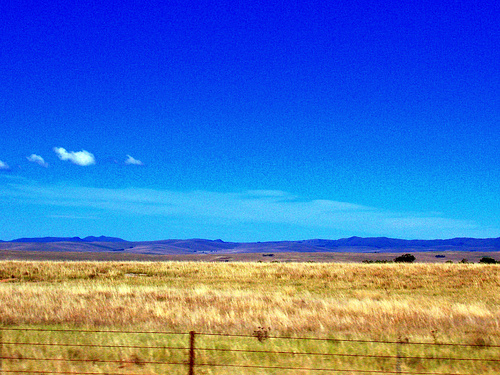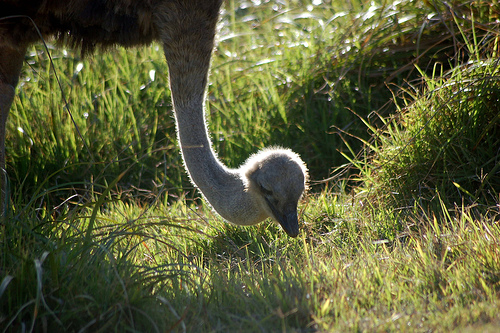
Nutrition
Ostriches are omnivores, like humans, meaning they eat plants and animals. It depends on what their habitat have for them to consume. It also depends on what time of the year it is. Whatever resources are available, or wherever (since they are nomadic), they will move to where the food is.
The types of plants that ostriches consume are; various seeds, grasses, bushes, shrubs, low low foliage on trees, roots, and leaves. Ostriches do mainly consume these herbaceous diets. They are considered grazers, so when they are wandering around, they will be munching on these types of nutrients.
The types of nutrients it consumes that are not plants are; invertebrates such as insects (locust) and small vertebrates such a lizards or rodents.
The meal is ingested using their beaks. The food is stored at the top of the of their throat, which is called the crop in most animals. But the ostrich does not have a crop. Instead, there is a glandular stomach whish is called the proventricculus. When there is a big enough mass of food in the proventricculus, it will then slide down their long throat into the part of the stomach called a ventriculus.
Due to the ostriches unique diet, it has a very unique digestive system. This digestive system contains a very long, tough intestine- stretched out ranging 46 feet! Within the stomach, there is grit- rocks and other material which enable the break down of food to enter the small intestine. The ostrich will need to eat stones or rocks to ensure that they can break down what they have consumed.
An ostrich can receive water from the plants it ingests. Ideally, an ostrich would like 1 to 2 gallons of water a day. But they can survive several days without water due to the complex system that comes with being so large, and their absorbance abilities with organs and tissues.
Depending on the season, the ostrich will overcome climate change or change in food available by eating what is available. If they can not find food within the area they are in, they will move to another, better equipped spot.
The ostrich has a closed circulatory system. This means that it has a "pump", which as an avian, has a four chambered heart with two atria and two ventricles (similar to ours)! They have a very efficient cardiovascular system. This system includes the heart, as well as transport vessels that move nutrient, oxygen and carbon dioxide, waste products, hormones, and heat throughout it's body! The oxygen and deoxygenated blood are separated within the ostriches heart. For more information on the ostriches circulatory system, check out this page talking about Ornithology.
It is essential for an ostrich to obtain adequate nutrients so that it can pass on it's genes through reproduction and continue with evolving the ostrich species.
For more information about ostriches, check out the San Diego Zoo Website!

